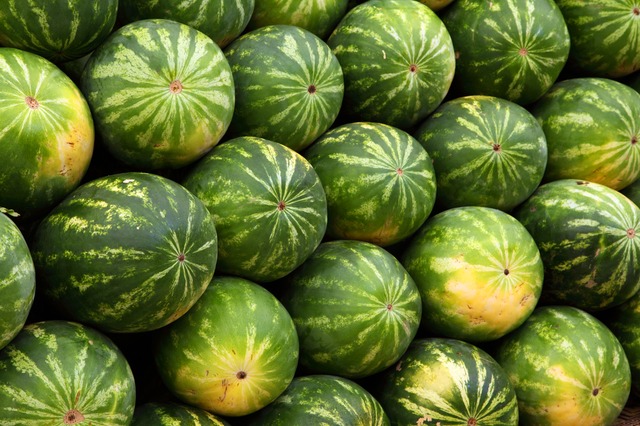FOR IMMEDIATE RELEASE
URBANA, Ill. – Selecting the most perfect ripe melon is not the easiest task. People often wonder how to select the best melon in the store, while home gardeners question when to pick melons off the vine. According to Nancy Kreith, University of Illinois Extension horticulture educator, “There are a few tips shoppers and growers can follow to enjoy most delicious melons of summer.”
It is best to leave melons on the vine until they reach full maturity, as they have the highest sugar content. After melons are harvested, flavor and texture can change. However, sugar content will not because the leaves are no longer attached to provide food in the form of carbohydrates for the developing fruit.
Be careful not to overwater ripening melons, as excess water can dilute the sugar content. Large producers harvest melons while they are still firm for shipping purposes. Kreith says, “Home gardeners have the privilege of harvesting melons at peak ripeness. If you are not a gardener, try to source locally grown melons for amazing flavor.”
When growing watermelons, look for the following signs to know they’re ready. As watermelons become ripe, the side resting on the ground turns from white to yellow. Secondly, the tendril (stem-like structure) closest to the stem turns from green to black on most varieties. At this time, the watermelon can be cut – not pulled or twisted – from the vine. Similarly, when purchasing watermelons, Kreith says, “Look for yellowing on one side verses the thumping test, since newer varieties tend to be more firm and crisp. Listening for the hollow sound is not reliable.”
Other non-slip melons include: honeydew, Crenshaw, and casaba. These are melons that do not easily pull away from the vine. Similarly to watermelons, the side resting on the ground will turn yellow when it is ripe. Another tip is to press the fruit on the end opposite the stem. If it is slightly soft, then then it is starting to ripen. The finished color also changes. Honeydew turns creamy yellow, Crenshaw turns golden yellow and green, and casaba turns golden. For honeydews specifically, blotching or streaking on the surface also indicates that the fruit is mature.
In muskmelons (including cantaloupes), maturity is determined by how easily it can be pulled or slipped from the vine. Kreith says, “One way to check for maturity is to place your thumb beside the stem and gently apply pressure to the side. If the stem separates easily, it is ripe.” It should slip easily off the vine leaving a clean scar on the melon. When growing muskmelons at home, wait for them to become “full-slip,” to avoid premature harvest.
Kreith says, “Gardeners and shoppers should now feel confident harvesting and selecting melons for peak flavor. These tips should leave you ready to choose the best of the bunch. So, sit back and enjoy a slice of mouth-watering melon.”
News Source: Nancy Kreith, 708-679-6889, kreith@illinois.edu
